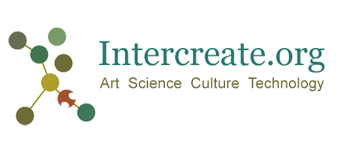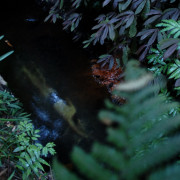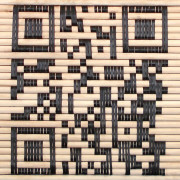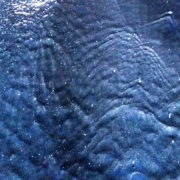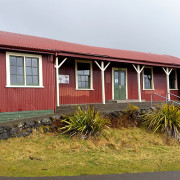Project Proposal – Brooke Sturtevant-Sealover

Prototype 4.3
12” by 12” by approximately 24”- size varies according to the growth of the plant
Custom Built Circuits by Karl Palm, Plant, 2011
Project Proposal:
Objectives:
a) to study the interactions between the plants, other living organisms, and the environment,
b) to dialogue and/or collaborate with scientists
c) to create a set of traditional and/or allographic drawings based on collected data
I am particularly interested in complex relationships like the endemic mistletoe Peraxilla tetrapetala[1] has established to ensure its survival. This mistletoe plant creates exploding flowers whose morphology allows native birds, such as the Bellbird, to nibble at the buds in a certain way to open the flower. In exchange for the sweet nectar the bird inadvertently pollinates the blossom. This plant has also established an interesting relationship with two species of native bees that are the only known invertebrates to be able open an explosive, vertebrate-adapted flower. [2] In return for pollination, the Peraxilla offers the bees an untouched supply of nectar in over-harvested areas. As a parasitic plant, the mistletoe is also dependent on the success of its host. These relationships exist in a unique delicate balance.
To study these relationships I will use custom-built galvanometers to measure the changes in electrical resistance within a selected group of plants. The changes in electrical resistance denote the plant’s physical responses to their ever-changing environment. These changes will be monitored and recorded using a set of Arduino microcontrollers and laptop computers. I will also employ stop-motion cameras to follow the movement of the plants as well as the motion in the surrounding environment throughout the day. To create my work, I will use a method of generative notation to explore the vital nature of the plant through the use of collected data and two, three and four-dimensional drawing strategies. I have found that this method of working often produces new insights concerning the nature of the plant’s growth and intensions.
Is it possible through these methods of observation to determine if plants can sense a bee or bird’s proximity? Can other plants sense the opening of a neighboring plant’s blossom? How connected are the Peraxilla tetrapetala plants to their host? How do the established relationships of the host plant affect the growth and flowering of the Peraxilla tetrapetala?
Moving from the individual to the species as a whole- I will also work with a botanist from the Allan Herbarium, as well as other scientists to see what correlations exist between the climate changes (weather conditions, habitat disruption) and fluctuations in bird and bee populations (changes in amount of plant interactions), with the population of Peraxilla tetrapetala and its flowering density. This research will also generate a series of drawings – much like the ones described above.
[1] If for some reason I would be unable to work with the Peraxilla tetrapetala, there are many other interesting relationships established between plants and other species. The Harakeke or Flax plant, for example, is home to several symbiotic insects that spend their entire life cycle on the plant. I would work with this plant or another in a similar way to what is described above.
[2] Ladley, J. J.; Kelly, D. (1995) Explosive New Zealand mistletoe. Nature 378: 766
Brooke Sturtevant-Sealover is an artist who establishes relationships with plants and investigates their intentions and life strategies. The drawings that emerge from this examination explore the changes in growth and morphology of the plant as well as how our relationship with plants is different from what is perceived. Her work is a product of the ever-changing relationships between the plant, the artist, and the carefully constructed environment surrounding the plant. Through the use of generative notation she explores the vital nature of the plant with the data collected from her investigations and two, three, and four-dimensional drawing strategies. Her method of working, which creates unintended visual results, leaves open the possibility for producing a new awareness concerning the nature of the plant’s growth and intentions.
